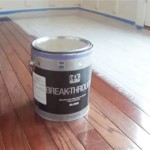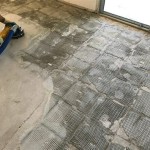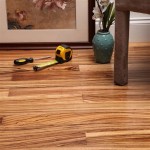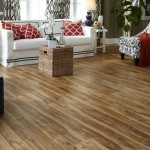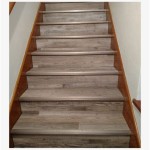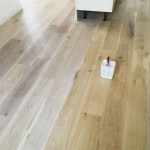How to Remove Carpet Tape Residue From Hardwood Floors
Carpet tape is a common adhesive used to secure rugs and carpets to hardwood floors. While it effectively prevents slipping and bunching, the adhesive residue left behind after removal can be notoriously difficult to eliminate. This residue not only detracts from the aesthetic appeal of the hardwood but can also attract dirt and grime, further complicating the cleaning process. Therefore, understanding effective methods for removing carpet tape residue is essential for maintaining the integrity and appearance of hardwood floors.
The type of tape used, the duration it was adhered to the floor, and the finish of the hardwood all influence the difficulty of residue removal. Older, more aggressive tapes tend to leave behind a particularly stubborn residue. Similarly, floors with delicate or worn finishes require gentler cleaning methods to avoid damage. Before attempting any cleaning process, identifying these factors is crucial for selecting the appropriate and safest approach.
Identifying the Type of Residue and Floor Finish
Before beginning the removal process, careful assessment of both the adhesive residue and the hardwood floor finish is paramount. Different types of carpet tape utilize different adhesives, and some are more persistent than others. The age of the residue also plays a significant role, as older adhesives often harden and become more resistant to solvents. Determining whether the residue is gummy, brittle, or a thin film will influence the chosen cleaning agent and technique.
Equally important is understanding the type of finish applied to the hardwood floor. Common finishes include polyurethane, varnish, shellac, and wax. Polyurethane is a durable, water-resistant finish that can withstand more rigorous cleaning methods. Varnish is similar to polyurethane but may be less resistant to certain solvents. Shellac is a more delicate finish that is susceptible to damage from water and alcohol-based cleaners. Wax finishes require specialized cleaning products designed for wax surfaces. Applying an inappropriate cleaning agent can strip the finish, discolor the wood, or cause permanent damage.
A simple test can help determine the type of finish. In an inconspicuous area, such as under a piece of furniture, gently rub a small amount of denatured alcohol onto the floor. If the finish becomes sticky or dissolves, it is likely shellac. If the finish remains intact, it is likely polyurethane or varnish. For wax finishes, consult the manufacturer's recommendations for appropriate cleaning products. This preliminary assessment will guide the selection of the safest and most effective removal method.
Methods for Removing Carpet Tape Residue
Numerous methods exist for removing carpet tape residue from hardwood floors, ranging from simple household items to specialized cleaning solutions. The optimal method depends on the severity of the residue and the type of floor finish. Starting with the least aggressive approach is recommended to minimize the risk of damage.
One of the mildest methods involves using a plastic scraper. Carefully scrape the residue at a shallow angle, avoiding excessive pressure that could scratch the floor. This method is most effective for removing loose or brittle residue. A hairdryer can be used to gently warm the residue, making it more pliable and easier to scrape away. Apply heat in short bursts to avoid overheating the floor. Follow up with a damp cloth to remove any remaining adhesive.
Another common method involves using household solvents such as mineral spirits or adhesive remover. These solvents work by dissolving the adhesive, making it easier to wipe away. Before applying any solvent, test it in an inconspicuous area to ensure it does not damage the finish. Apply a small amount of solvent to a clean cloth and gently rub the residue. Avoid pouring the solvent directly onto the floor, as this can saturate the wood and cause discoloration. After applying the solvent, allow it to sit for a few minutes to soften the adhesive before wiping it away with a clean cloth. Repeat as needed until the residue is removed.
For more stubborn residue, consider using a specialized adhesive remover designed for hardwood floors. These products are formulated to effectively dissolve adhesive without damaging the finish. Always follow the manufacturer's instructions carefully. Apply the remover to a clean cloth and gently rub the residue. Allow it to sit for the recommended time before wiping it away. Rinse the area with a damp cloth to remove any remaining residue from the remover.
In some cases, a homemade solution of vinegar and water can be effective. Vinegar is a mild acid that can help to dissolve adhesive. Mix equal parts white vinegar and warm water in a spray bottle. Spray the solution onto the residue and allow it to sit for a few minutes. Wipe away the residue with a clean cloth. This method is best suited for light residue on floors with durable finishes.
Finally, for particularly stubborn residue, a paste made from baking soda and oil can be used. Mix baking soda with a small amount of cooking oil (such as olive oil or vegetable oil) to form a thick paste. Apply the paste to the residue and allow it to sit for several hours or overnight. The oil will help to soften the adhesive, while the baking soda will act as a mild abrasive. Wipe away the paste with a clean cloth. This method is best suited for floors with durable finishes, as the baking soda can be mildly abrasive.
Post-Removal Cleaning and Maintenance
After successfully removing the carpet tape residue, it is essential to clean and maintain the affected area to restore the floor's original appearance and protect it from future damage. This involves removing any remaining cleaning agents, polishing the floor, and applying a protective coating if necessary.
Begin by thoroughly wiping the area with a clean, damp cloth to remove any residual cleaning agents. Ensure the cloth is only slightly damp to avoid saturating the wood. For floors cleaned with solvents, consider using a specialized hardwood floor cleaner to neutralize any remaining solvent residue. Follow the manufacturer's instructions for the specific cleaner being used.
Once the floor is clean and dry, polishing can help to restore its shine and luster. Use a hardwood floor polish specifically designed for the type of finish on the floor. Apply the polish according to the manufacturer's instructions, typically using a soft cloth or applicator pad. Buff the floor to a shine using a clean, dry cloth or polishing machine.
For floors with worn or damaged finishes, consider applying a protective coating to prevent future damage. This could involve applying a new coat of wax, polyurethane, or varnish, depending on the original finish. Consult a flooring professional for advice on the best type of coating for the specific floor and its needs. Before applying any coating, ensure the floor is thoroughly clean and dry. Follow the manufacturer's instructions carefully to ensure proper application and drying time.
Preventing future residue buildup is also crucial. When using carpet tape, opt for low-residue or removable adhesive tapes designed specifically for hardwood floors. Avoid using aggressive tapes that are likely to leave behind stubborn residue. Regularly inspect the carpet and tape for signs of wear or damage. Replace the tape as needed to prevent it from adhering too strongly to the floor. By taking these preventive measures, the need for aggressive residue removal methods can be minimized, thereby extending the life and beauty of the hardwood floors.
Furthermore, consider alternative methods for securing rugs and carpets to hardwood floors. Options include using rug pads with non-slip backing, which provide cushioning and prevent slipping without the need for adhesive. These pads are available in various sizes and materials to suit different types of rugs and floors. Another option is to use furniture to anchor the rugs, such as placing a sofa or coffee table partially on the rug to hold it in place. By exploring these alternatives, the reliance on carpet tape can be reduced, minimizing the risk of residue buildup and potential damage to the hardwood floors.

Flooring How Can I Remove Carpet Adhesive From Hardwood Floors Home Improvement Stack Exchange

Removing Glue Or Adhesive From Hardwood Floors The Speckled Goat

Easy Ways To Get Rid Of Carpet Tape On Wooden Floors Or Stairs Floor Sanding

How To Remove Double Sided Carpet Tape From A Wood Floor

Removing Glue Or Adhesive From Hardwood Floors The Speckled Goat

The Best Way To Remove Tape Residue From Hardwood Flooring Between Naps On Porch

Best Cleaner Ever To Remove Sticky Tape From Floors Etc Safe Easy

Removing Carpet Tape From Hardwood Floors Or Stairs

Removing Glue Or Adhesive From Hardwood Floors The Speckled Goat

How To Remove Residue From Under Carpet H W Floors
See Also
